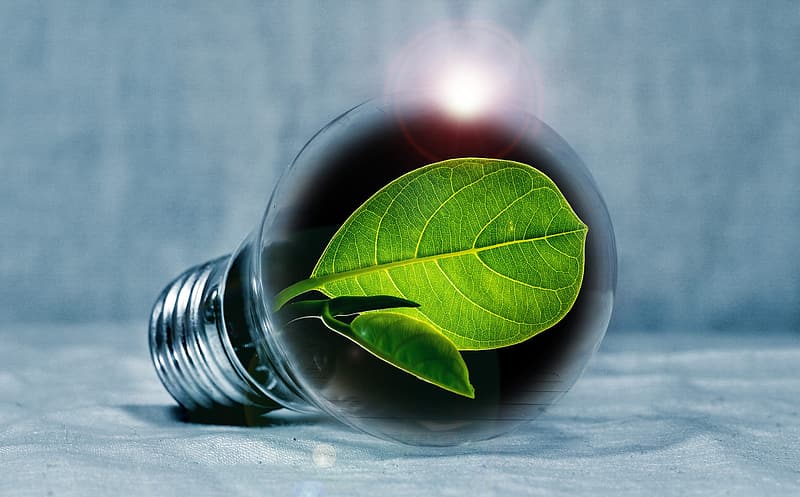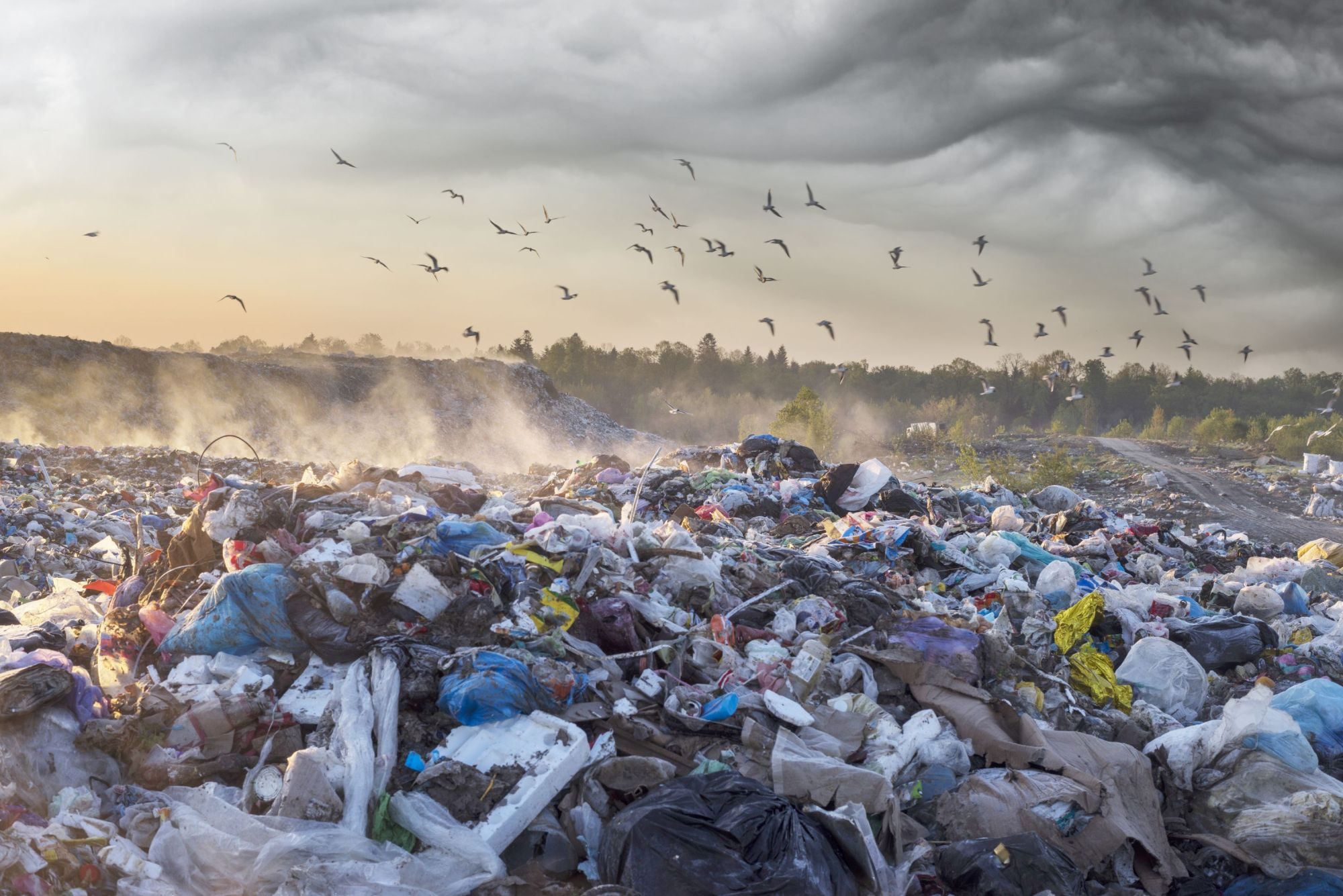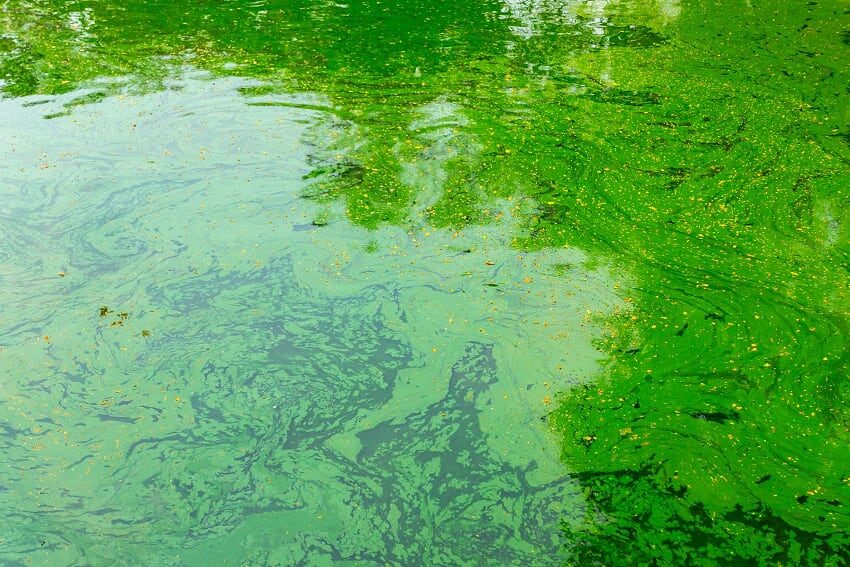Biosolids are a natural byproduct of human waste management. Wherever people live and work, organic waste will be present. For years, management practices for human waste have been to partially treat then dispose of the waste solids. Through advancements in technology, we can now extract energy from biosolids and create new safe environmentally friendly products derived from the organic residuals. The energy and heat produced from the digestion of biosolids can actually support a path away from fossil fuels and towards green sustainable power. If you consider the added benefits of soil health and water quality protection, the recycling of biosolids is a clear, sustainable approach for societiesand the environment.
Biomass Green Energy
Anaerobic digesters have been utilized for over 100 years. They’ve also been a source of clean green energy for decades. Anaerobic digestion is a simple process that utilizes organic biomass feedstock to produce power. It is similar in cost-effectiveness to fossil fuels with added environmental benefits thatmake it a better more responsible alternative. With AD, greenhouse gas emissions are captured instead of being released into the atmosphere. These systems rely on renewable sources of biomass like waste, which allows them to reduce overall reliance on fossil fuels while also reducing greenhouse gas emissions and our reliance on landfills.
Check out more information on biomass green energy below:
https://www.viaspace.com/biomass_versus_alternatives.php

Landfill Diversion
Reducing the volume of materials that go to landfills helps the environment and our society. Landfills are large, costly operations that pose a threat to both the environment and those who live nearby. By utilizing AD systems, we can divert waste from landfills, which reduces truck traffic, reduces greenhouse gas emissions, and preserves our limited natural resources.
Alternative uses of waste resources always represent a major win for society, businesses, and the environment. Recycling of biosolids into a safe, usable form doesexactly that. By using Class A or EQ biosolids, you can reduce the need for fertilizer mining, save energy, reduce CO2 emissions, and conserve landfill space in the process. That’s a win for everyone.
Check out more information on landfill diversion and eco-effective design below: https://www.sciencedirect.com/topics/engineering/eco-efficiency

Water Quality
Many of the water quality challenges that we face throughout our country today involve nutrient source pollution. Nutrient pollution is the negative effect of nutrients on water systems like lakes, rivers, and watersheds, due to excess soluble nutrients contaminating the water. Overall, the leading contributors to nutrient source pollution come from the application of synthetic fertilizers and liquid-based animal manure. These highly mobile forms of nutrients pose some of the greatest challenges to water quality issues today because they are extremely mobile and soluble in water. This means that after land application takes place, there is a high probability that nutrients will wash off during rain events and irrigation, leach through poor textured soils, or be blown off the surface due to wind. Theseeffects can cause issues like algal blooms and other aquatic threats that are extremely harmful to the environment.
Alternatively, stabilized Class A biosolids-based fertilizers are not nearly as mobile or water-soluble. This makes them a better option for land application. In addition, Class A biosolids can increase plant uptake because of the improved soil quality health that they provide and their ability to retain their presence on the land. Biosolids based fertilizers help improve soil structures aiding in the soil’s ability to grab and retain water and nutrients, actually counteracting nutrient source pollution from runoff or infiltration. Fertilizing with biosolids based fertilizer is not only smart for your soils but smart for the protection of our water sources.

Soil Quality Health
For further information on the complex role that healthy soils have on our society please check out our section regarding soil quality health.
Soil Carbon Sequestration
Soil plays a vital role in our ecosystem and can help reduce atmospheric carbon dioxide. The notion of pulling CO2 from the atmosphere and organic soil is called Soil Carbon Sequestration.
The primary way carbon is stored in soil is in the soil’s organic matter. The more robust our carbon pool, the more soils can help pull down carbon dioxide. Improving soil health through the application of high organic matter material can add to a soil’s carbon pool, therefore, increasing its ability to combat climate change and global warming.
Check out more information on soil carbon sequestration below:
https://www.nature.com/scitable/knowledge/library/soil-carbon-storage-84223790/
https://lystek.com/biofertilizers-vs-synthetic-chemical-fertilizers/


Biomass Green Energy
Anaerobic digesters have been utilized for over 100 years. They’ve also been a source of clean green energy for decades. Anaerobic digestion is a simple process that utilizes organic biomass feedstock to produce power. It is similar in cost-effectiveness to fossil fuels with added environmental benefits thatmake it a better more responsible alternative. With AD, greenhouse gas emissions are captured instead of being released into the atmosphere. These systems rely on renewable sources of biomass like waste, which allows them to reduce overall reliance on fossil fuels while also reducing greenhouse gas emissions and our reliance on landfills.
Check out more information on biomass green energy below:

Landfill Diversion
Reducing the volume of materials that go to landfills helps the environment and our society. Landfills are large, costly operations that pose a threat to both the environment and those who live nearby. By utilizing AD systems, we can divert waste from landfills, which reduces truck traffic, reduces greenhouse gas emissions, and preserves our limited natural resources.
Alternative uses of waste resources always represent a major win for society, businesses, and the environment. Recycling of biosolids into a safe, usable form doesexactly that. By using Class A or EQ biosolids, you can reduce the need for fertilizer mining, save energy, reduce CO2 emissions, and conserve landfill space in the process. That’s a win for everyone.
Check out more information on landfill diversion and eco-effective design below: https://www.sciencedirect.com/topics/engineering/eco-efficiency

Water Quality
Many of the water quality challenges that we face throughout our country today involve nutrient source pollution. Nutrient pollution is the negative effect of nutrients on water systems like lakes, rivers, and watersheds, due to excess soluble nutrients contaminating the water. Overall, the leading contributors to nutrient source pollution come from the application of synthetic fertilizers and liquid-based animal manure. These highly mobile forms of nutrients pose some of the greatest challenges to water quality issues today because they are extremely mobile and soluble in water. This means that after land application takes place, there is a high probability that nutrients will wash off during rain events and irrigation, leach through poor textured soils, or be blown off the surface due to wind. Theseeffects can cause issues like algal blooms and other aquatic threats that are extremely harmful to the environment.
Alternatively, stabilized Class A biosolids-based fertilizers are not nearly as mobile or water-soluble. This makes them a better option for land application. In addition, Class A biosolids can increase plant uptake because of the improved soil quality health that they provide and their ability to retain their presence on the land. Biosolids based fertilizers help improve soil structures aiding in the soil’s ability to grab and retain water and nutrients, actually counteracting nutrient source pollution from runoff or infiltration. Fertilizing with biosolids based fertilizer is not only smart for your soils but smart for the protection of our water sources.
Soil Quality Health
For further information on the complex role that healthy soils have on our society please check out our section regarding soil quality health.

Soil Carbon Sequestration
Soil plays a vital role in our ecosystem and can help reduce atmospheric carbon dioxide. The notion of pulling CO2 from the atmosphere and organic soil is called Soil Carbon Sequestration.
The primary way carbon is stored in soil is in the soil’s organic matter. The more robust our carbon pool, the more soils can help pull down carbon dioxide. Improving soil health through the application of high organic matter material can add to a soil’s carbon pool, therefore, increasing its ability to combat climate change and global warming.
Check out more information on soil carbon sequestration below:
https://www.nature.com/scitable/knowledge/library/soil-carbon-storage-84223790/
https://lystek.com/biofertilizers-vs-synthetic-chemical-fertilizers/
